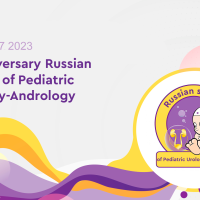
Surgical correction of continent appendicovesicostomy complications in children
Article authors






Saint Petersburg State Pediatric Medical University
The department of urology of the Saint Petersburg State Pediatric Medical University, Saint Petersburg
Introduction
The continent appendicovesicostomy shaping technique is used to provide bladder intermittent catheterization in patients with chronic retention of urine. The appendicovesicostomy with proper functionality eases the nursing care and promotes the achievment of micturition contol. On the contrary the continent appendicovesicostomy complications lead to a poor quality of life. It is most essential to know the preventive measures and correction methods of the complications.
Methods and materials
From 2003 to 2018 52 children with extrophy of bladder and epispadia, 40 – with myelodysplasia and 8 – with other medical conditions (urethral trauma, anal atresia, urogenital sinus, myelopathy, rhabdomyosarcoma of urinary bladder) had had the appendicovesicostomy at the Pediatric urology clinic of SPBSPMU. 49 patients had complications. The structure of postoperative complications is provided hereafter: cutaneous part of stoma channel stenosis – 38%, blockade of appendix – 3%, stoma incontinence – 15%, stoma mucous granulation - 3% In each case the complications were surgically removed. VQZ – reconstruction of cutaneous part of stoma channel was done in 36 cases, laser incision of stenosis zone or incarnation – 15, intravesical extension of appendicovesicostomy – 4, DAM+ injection – 15.
Results
The laser incision of stenotic appenicovesicostomy had a stabile effect in 5 of 15 patients . The VQZ - reconstruction of appendicovesicostomy succeeded in each case, though it was carried out twice for two patients. This technique is appeared to be equally effective for both stenosis and appendicovesicostomy prolapse. The correction of stoma incontinence was the most demanding process. The endoscopic treatment including repeated one appeared to be effective for 5 of 15 cases. 10 patients required open operations. The intravesical extension of appendicovesicostomy succeeded in 2 of 4 cases, the incontinence could not managed to be cured in 1 case and in 1 another case was cured, but arose difficulties of catheterization. In 6 cases it was necessary to correct the bladder capacity, the medication succeeded in 3 children and did not succeed in 3 other ones, - intestinal augmentation of bladder was done. The appenicovesicostomy was replaced with enterovesicostomy in 1 case and closed spontaneously in 1 case.
Conclusion
Each urologist performing appendicovesicostomy surgery must be ready to treat the postoperative complications. The stenosis of appendicovesicostomy is the most frequent complication and yet it answers most effectively to medical intervention. The noncirculating fistulization of skin and appendix wall is both the treatment and the prevention of this complication. Short appendix and small bladder capacity predispose to the occuring of incontinence. In that case it is necessary to choose the conservative therapy to provide the increase of bladder capacity and submucosal appendicovesicostomy augmentation.






